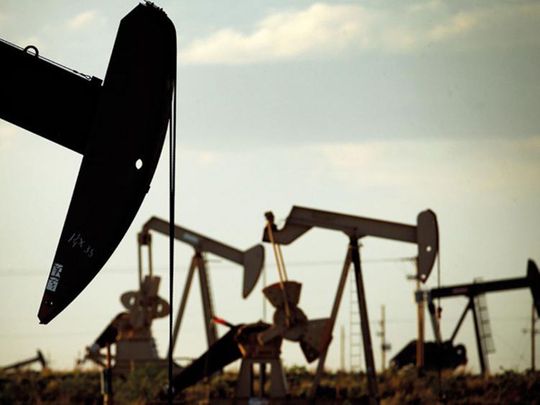
Dubai: Oil edged higher after slumping to an eight-month low, with investors assessing global demand as China pushes on with its Covid Zero policy and central banks tighten monetary policy to fight inflation.
West Texas Intermediate pushed back toward $83 a barrel after collapsing by almost 6 per cent on Wednesday, the biggest loss since mid-July. Several Chinese centers face anti-virus lockdowns, including the megacity of Chengdu, imperiling energy demand in the world’s biggest importer.
Crude has tumbled by almost $50 a barrel since peaking in March in the initial aftermath of Russia’s attack on Ukraine. The retreat has been driven by a global slowdown as the Federal Reserve boosts rates, lifting the dollar to a record. On Wednesday, Fed Vice Chair Lael Brainard said that the US central bank would have to tighten policy to restrictive levels.
Oil’s deep loss on Wednesday came despite several supportive market factors. Russian President Vladimir Putin said the country would not supply energy to any nations that backed a planned US-led price cap on the nation’s crude. In addition, the Energy Information Administration raised its outlook for global oil demand, while also cutting the forecast for US supply.
“Some bargain-hunting buying is to be expected after a dive like yesterday’s,” said Vandana Hari, founder of Vanda Insights, who added that drop appeared to be overdone. Still, “the approach of the September 21 Fed meeting, where another 75-basis-point rate hike is expected” could add headwinds, she said.
On Monday, the Organization of Petroleum Exporting Countries and its allies including Russia agreed to a tiny cut in output, surprising most observers who’d expected no change. The slump in prices since that move presents a test for alliance, especially as key member Saudi Arabia said group would be “attentive, preemptive and pro-active” in managing the market.
“Outbreaks of Covid-19 in China are weighing on demand,” Australia & New Zealand Banking Group Ltd. said in a note, citing traffic levels in major cities. “OPEC announced a small cut to production in October at its last meeting. However, it may move earlier if demand concerns weigh on prices further.”
Widely-watched time spreads have been volatile recently. The prompt spread for global benchmark Brent - the difference between its two nearest contracts - was 84 cents a barrel in backwardation on Thursday. That compares with above $6 as recently as late July and $1.53 a month ago.
In its latest market snapshot, the American Petroleum Institute reported nationwide US crude stockpiles expanded by 3.6 million barrels last week, although holdings at the key storage hub in Cushing, Oklahoma, dropped, according to people familiar with the figures. Further insight will come later Thursday from the EIA’s weekly breakdown of supply and demand.












